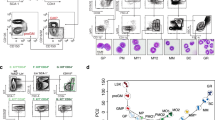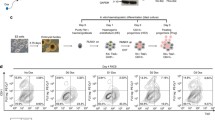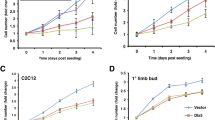Abstract.
Apoptosis in murine myeloid cell lines requires the expression of the Requiem gene, which encodes a putative zinc finger protein. We detected the protein in both cytoplasmic and nuclear subcellular fractions of murine myeloid cells and human K562 leukemia cells, which suggests that the protein might have a function distinct from a transcription factor. This distribution did not alter upon apoptosis induction by IL-3 deprivation. As an approach to investigate its role in development, we determined the spatio-temporal expression pattern in the mouse. Expression was detected in various tissues in earlier gestational age; however, confined to testes, spleen, thymus, and part of the hippocampus in the adult mouse. The expression profile is consistent with a functional role during rapid growth and cell turnover, and in agreement with a regulatory function for hematopoietic cells. The human cDNA clone sequenced showed high homology to its murine counterpart and extended the open reading frame by 20 codons upstream. The gene is located in the proximal region of mouse Chromosome (Chr) 19. In the homologous human region at 11q13, it is located at about 150 kb centromeric from MLK3.
Similar content being viewed by others
Author information
Authors and Affiliations
Additional information
Received: 20 January 1998 / Accepted: 10 April 1998
Rights and permissions
About this article
Cite this article
Gabig, T., Crean, C., Klenk, A. et al. Expression and chromosomal localization of the Requiem gene. 9, 660–665 (1998). https://doi.org/10.1007/s003359900840
Issue Date:
DOI: https://doi.org/10.1007/s003359900840




